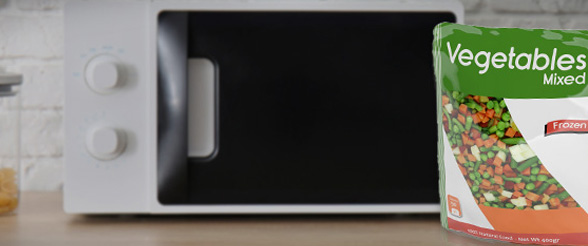Elevated Temperature Packaging
Sun Chemical Offers Migration Compliant Solutions for Elevated Temperature Packaging
A key packaging design trend emerging in recent years has been the increase in convenience packaging, such as “ready meals” that are microwaved, oven cooked or “boiled in the bag,” in their original store packaging, retail and home use of “cook-in-the-tray” bakery items, etc. There is also significant growth in extended shelf-life food packaging incorporating retort and pasteurization processes prior to sale.


Foodstuffs packaged in boxes or trays, that are to be cooked by microwaving or in an oven, may be subject to several conditions, including:
- Close proximity of print to foodstuff
- Long-term storage (extended shelf-life products)
- A wide variety of cooking times and temperatures
- Exposure to high temperatures when cooked in an oven
- Localized heating in a microwave oven, especially if the packaging includes a susceptor*
Being exposed to these various conditions means an elevated risk of migration. In addition to formulation components, potential migrants include:
- Thermal breakdown products from pigments
- Volatile components from the ink and coating vehicle systems
- Low molecular weight components of inks, coatings, adhesives and the substrate
- By-products from the UV curing process
To minimize such risks, specifically selected migration compliant inks and coatings are recommended for these applications and the print area should be minimized where possible.
These specific products will include a limited range of pigments and thus colors that are suitable for high temperature applications. Recommendations may differ between microwave conditions up to 180°C and higher temperatures that may be encountered in ovens.
The use of water-based coatings should be tested in the specific application due to the risk of melting and break down in elevated temperature conditions. In this case, a cross-linkable water-based coating may be used.
There have been a small number of reported instances of a potential fire hazard when containers printed with a printing ink incorporating carbon black pigment are heated in a microwave oven. Although these incidents appear to be rare, they have not been subjected to definitive technical evaluation. Consequently, Sun Chemical advises that products printed with carbon black containing inks intended for microwave applications, should be assessed under appropriate conditions of use to ensure they are fit for that specific purpose. If necessary, a trichromatic black blend can be used in place of a carbon black-based ink.
Learn about Sun Chemical migration compliant inks that we offer.
Resources
Request Information
Request